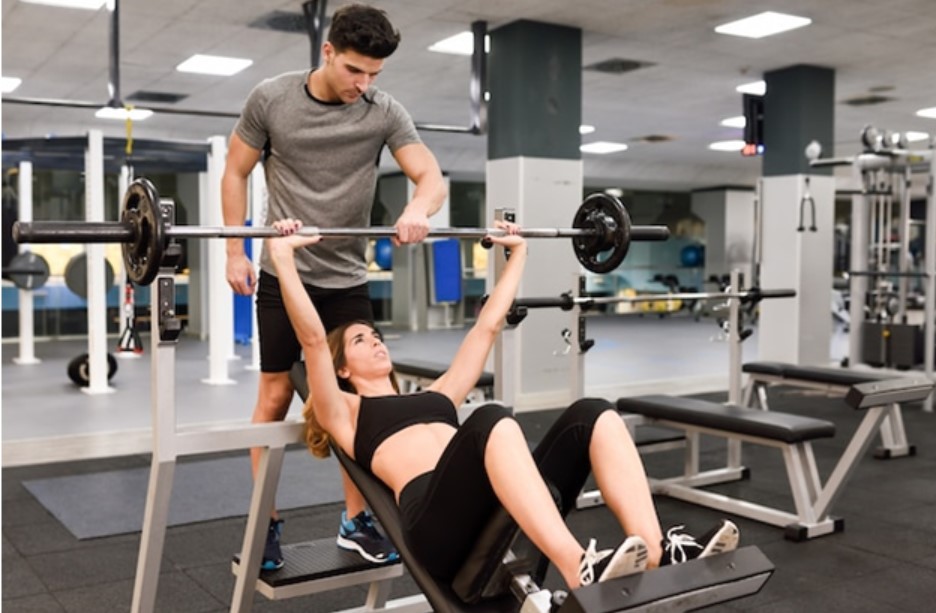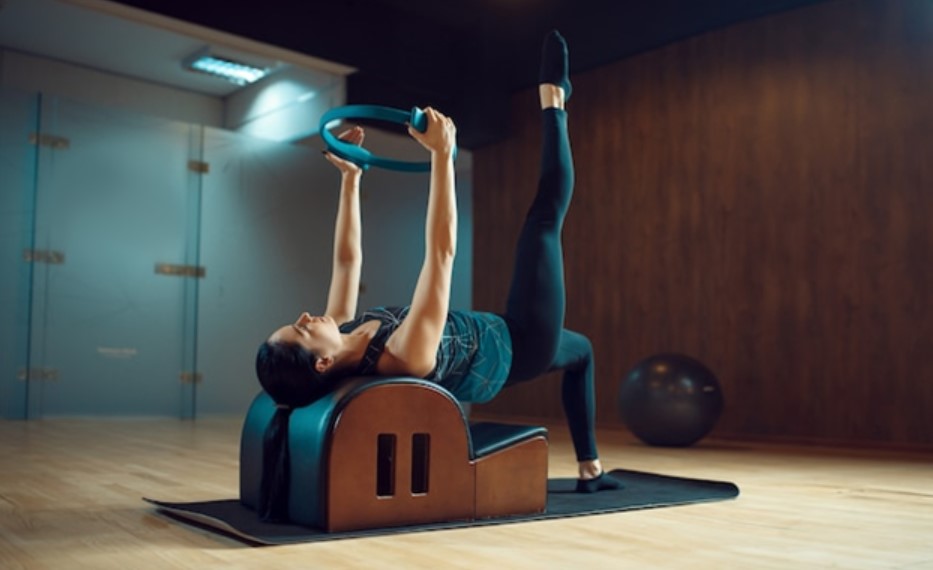Plyometric training is a type of exercise that focuses on explosive movements, such as jumping and hopping, to improve athletic performance. This training method has been used by athletes across various sports, from basketball to track and field, to develop explosive power and agility.
In this blog post, we will dive into the world of plyometric training, discussing what it is and how it can benefit you. We’ll also cover the OPT model of plyometrics and the three components of plyometric patterns.
Additionally, we will provide examples of plyometric exercises and discuss the theoretical training benefits of these exercises. Finally, we’ll review some scientific foundations for the application of plyometrics and clinical guidelines for their use.
If you’re looking to take your athletic performance to the next level with explosive power, then this blog post is for you!
What is Plyometric Training?
Plyometric training is a workout that emphasizes rapid, explosive movements. By stretching and contracting muscles quickly, it can boost power and speed. Plyometric exercises consist of jumps, bounds, and hops. This type of training can enhance athletic performance in sports like volleyball, soccer, and basketball.
Benefits of Plyometric Training for Explosive Power
Plyometric training is a type of exercise that focuses on quick, powerful movements and is often used to enhance explosive power. It involves rapid stretching and contracting of muscles, which improves muscle strength, power, and overall athletic performance. Here are some benefits of plyometric training for explosive power:
- Increased muscular power: Plyometric exercises target the fast-twitch muscle fibers responsible for generating quick and explosive movements. By repeatedly stretching and contracting these muscles, plyometric training increases their power output, allowing you to generate more force and move more explosively.
- Enhanced speed and agility: Plyometric exercises improve your ability to generate rapid, forceful movements, which translates into improved speed and agility. By training your muscles to contract quickly and forcefully, you can accelerate faster, change direction more efficiently, and react more explosively in various sports and activities.
- Improved jump performance: Plyometric training is highly effective for increasing vertical jump height. The explosive movements involved in exercises like box jumps, depth jumps, and squat jumps train your leg muscles to generate maximum force in a short amount of time, leading to greater vertical jumping ability.
- Better overall athletic performance: Plyometric training can benefit athletes across various sports and disciplines. The increased power, speed, and agility gained from plyometrics can improve performance in activities such as basketball, soccer, volleyball, track and field events, martial arts, and many others.
- Increased bone density: The high-impact nature of plyometric exercises, such as jumping and landing, stimulates bone growth and helps increase bone density. This can be particularly beneficial for athletes at risk of osteoporosis or individuals looking to improve their bone health.
- Injury prevention: Plyometric training can contribute to injury prevention by improving muscular strength and power, as well as enhancing neuromuscular coordination. Stronger muscles and improved coordination can help absorb and dissipate forces more effectively, reducing the risk of common sports-related injuries like sprains and strains.
- Time-efficient workouts: Plyometric exercises can be incorporated into high-intensity interval training (HIIT) or circuit training routines, making them a time-efficient option for improving explosive power. These workouts typically involve short bursts of intense activity followed by periods of rest, maximizing the effectiveness of your training in a shorter amount of time.
When incorporating plyometric exercises into your training routine, it’s important to start at an appropriate level of difficulty and progress gradually. Seek guidance from a qualified fitness professional to ensure proper technique and safety, especially if you are new to plyometrics or have any underlying health conditions.

Plyometric Exercises for Injury Prevention
To enhance your athletic performance and prevent the risk of injury during high-intensity sports that require power and performance, incorporate plyometric exercises into your workout routine. Plyometric exercises involve shortening the eccentric phase of muscle contractions followed by an explosive concentric phase. Plyometric exercise is suitable for beginners who start with low-intensity exercises before gradually increasing repetitions. To achieve maximal force production during plyometric training, perform each exercise in a squat position on the balls of your feet while performing jumps like lateral bounds or hop and hold.
Plyometric Exercises for Injury Rehabilitation
Athletes recovering from injuries can benefit greatly from plyometric exercises for injury rehabilitation. These workouts involve quick movements such as jumps and hops that improve speed, power and agility. Proper execution is critical to avoid injuries; remember to gradually increase intensity while maintaining good form. Plyometrics should be a part of a complete rehabilitation program that includes stretching and strength training with weights or bodyweight exercises.
Using the OPT Model for Plyometrics
Incorporating the OPT model into plyometric training can be highly beneficial for designing effective workouts that improve athletic performance. To prevent injury, always prioritize warming up and stretching before beginning any exercises. Customize each workout to suit your unique needs and goals while gradually increasing intensity over time for maximal results.
The 3 Components of Plyometric Patterns
- Eccentric Component in Plyometric Training
To build explosive power and enhance athletic performance, the eccentric component in plyometric training demands lengthening muscles before a powerful contraction. Besides, it improves muscle flexibility and reduces the risk of injury during intense activities. When incorporating eccentric exercises into your plyometric routine, examples like depth jumps, drop jumps, and single-leg hops should be taken under caution with a qualified personal trainer. Focus on good form while keeping your body weight properly positioned over your feet or balls of your feet.
- Amortization Component in Plyometric Training
To generate explosive power during Plyometric exercise routine, optimizing landing mechanics and reducing ground contact time are essential. Using reactive strength exercises can also be helpful to improve stretch-shortening cycle and generate maximal force while minimizing injury risk. However, one must be cautious not to prolong the amortization phase too much as it may not help in achieving desired results. Hence a personal trainer or coach should supervise these moves with good form and technique to avoid any potential risk of injury.
- Concentric Component in Plyometric Training
To develop explosive power in athletic performance, incorporate exercises targeting the concentric component of plyometric training. These exercises involve shortening muscles during explosive movements and include squat jumps, box jumps, and medicine ball throws. However, it is crucial to warm up properly and gradually increase intensity to avoid any risk of injury. Consulting with a fitness professional for individualized recommendations on intensity levels and frequency is highly recommended. With good form and caution, plyometric training can greatly enhance overall strength, agility, conditioning, and jump height.

Examples of Plyometric Exercises
- Squat Jumps for Plyometric Training
A great way to enhance explosive power and athletic performance is through Plyometric training exercises like squat jumps. Begin in a squat position with your feet positioned shoulder-width apart. Explode upward with maximal force while simultaneously raising your arms overhead before landing softly in a squat position. Squat jumps can be intensified by either adding weights or increasing the height of the jump. Uphold good form while executing any plyometric move to reduce risk of injury.
Secondary keyterms used – strength training, lower body, upper body, agility, conditioning, push-ups, lateral bounds, eccentric phase, concentric phase, tendon, single-leg bounds, risk of injury.
- Push-ups for Plyometric Training
Incorporate plyometric workouts like push-ups into your training regimen for better overall strength and explosive power. This type of training targets muscles in the chest, arms, and core while also improving athletic performance. To perform this plyometric exercise effectively, start with good form in a standard push-up position. Explosively launch yourself off the floor by pushing up so that your hands leave the ground and contract muscle groups throughout your body for maximal force generation. Ensure proper landing technique to avoid risk of injury.
- Lateral Bounds for Plyometric Training
To enhance agility and explosive power, incorporate lateral bounds into your plyometric workout routine. This plyometric exercise improves lateral movement and explosiveness without compromising your lower body’s strength training. Start with a half-squat position and jump sideways to land softly on the opposite foot. Ensure stability throughout the movement by keeping your hips low and upper body still. Increase the distance of every jump or add resistance with a weighted vest to challenge yourself further. Perfect for volleyball, basketball, or soccer players, include this type of training for maximal force during sprints or jumps.
- Hop and Hold for Plyometric Training
To enhance your overall strength and conditioning with plyometric exercises, try incorporating hop and hold into your workout routine. This type of training improves agility, explosiveness, and lower-body strength. By starting in a squat position and hopping forward as far as possible while maintaining proper form, you engage your entire body in maximal force production. To prevent the risk of injury, always land softly on the balls of your feet and maintain good form throughout the exercise. With consistent practice and good form, hop and hold can help you increase your vertical jump height, improve overall explosiveness, and add variety to your plyometric workout.
- Bodyweight Jumps for Plyometric Training
Starting your plyometric training with bodyweight jumps is a smart choice. Not requiring any equipment, these jumps can aid in developing explosive power and boosting overall athletic performance. To avoid injury, begin with lower-intensity jumps before progressing to more challenging ones. Ensuring proper form during each repetition is crucial for optimal plyometric results.
- Single-Leg Bounds for Plyometric Training
Single-leg bounds are an excellent plyometric exercise that can help you improve your explosiveness and overall strength. They involve jumping forward on one leg while driving the opposite knee up towards the chest. This movement pattern helps to enhance your athletic performance by improving balance, coordination, and stability while also strengthening your lower body muscles such as glutes, hamstrings, and calves.
- Plyo Push-ups for Plyometric Training
Incorporating plyo push-ups into an upper body-focused plyometric workout can help increase explosive power and overall strength while enhancing athletic performance. To perform this plyometric exercise that strengthens muscles like triceps and chest effectively without risking muscle contractions or risk of injury, use caution when performing the eccentric phase by lowering down slowly from a traditional push-up position before explosively pushing up using maximal force during the concentric phase. Modifying surface height allows for various fitness levels to practice good form while strengthening their muscles with this type of training.
Let’s Sum Up
Plyometric training is an effective way to boost your athletic performance and explosive power. It helps you develop the necessary strength, speed, and agility required for high-level sports. In order to get the most out of plyometric exercises, it’s important to use the OPT model, focus on the 3 components of plyometric patterns, and learn proper technique. There are numerous scientific studies that support the benefits of plyometric training, and several experts in the field have shared their insights as well. To learn more about incorporating plyometrics into your workout routine, check out our list of sources for plyometric training.
You May Also Like
Powerlifting for Beginners: A Stronger Future Starts Today
High-Intensity Training: The Benefits and How to Incorporate it into Your Workout Routine
Resistance Training vs. Cardio: Which is Better for Fat Loss?



